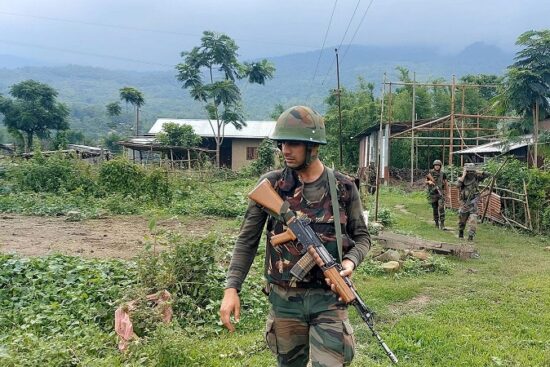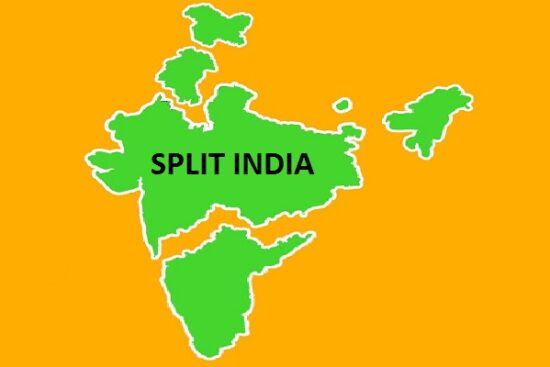
Balochistan, Pakistan’s largest province, possesses immense natural resources, including mineral reserves estimated at USD1 trillion. Unlocking the potential of these resources intelligently has the power to revolutionize Pakistan’s economy.

Natural resource wealth is a double-edged sword; it can both be a benefit and a burden if neglected over time, while its prudent administration and equal distribution can bring wealth and development to the region, reducing the likelihood of unpleasant conflict and inter-provisional disharmony. Natural resources alone can only help bolster a country’s economy if better institutions, rule of law, and competent governance enable equitable resource distribution.
In addition to being the country’s geostrategic and geoeconomic center, Balochistan is also a place of colossal mountain ranges and mesmerizingly gorgeous beaches, which holds evergreen minerals underneath it. Balochistan, Pakistan’s biggest province, is rich in natural resources. The province’s mineral riches, estimated to be worth $1 trillion, can revolutionize Pakistan’s economy if utilized intelligently.1 Despite having such vast potential, the mining sector in Balochistan still needs to be developed due to the lack of investment, and insufficient infrastructure, among other factors.
Balochistan also boasts an abundance of natural resources. Coal, sulfur, chromite, iron ore, barite, marble, quartzite, and limestone are all abundant in the province. Balochistan has significant oil reserves and the world’s most considerable quantities of copper and gold. Natural gas was discovered in 1953 in the Sui area of Dera Bugti, Balochistan, and has since been used to deliver gas throughout Pakistan.
The Saindak and Reko Diq mines are only two of the province’s primary copper and gold reserves. One of the world’s most significant undeveloped copper and gold resources, the Reko Diq mine in Balochistan is thought to have about 5.9 billion tons of copper and gold reserves. Balochistan also contains enormous quantities of other minerals. The province is one of the biggest producers of chromite in the world and produces more than 90% of the country’s total output. The manufacturing of stainless steel requires mineral chromite, which is in great demand in the international market.
With an estimated 200 million tons of reserves, Balochistan also has significant iron ore resources.2 The province offers excellent potential for the growth of a sizable iron and steel sector, which might contribute to job creation and strengthen the local economy. Whereas coal, which is mainly utilized for power generation, is another significant resource that may be found in Balochistan. The province’s estimated 185 billion tons of coal reserves can improve the nation’s energy requirements. Due to the lack of infrastructure and investment, the majority of these deposits still need to be tapped.3
One of the fundamental causes for most mineral deposits to stay undeveloped is a lack of infrastructure and investment. Additionally, the province’s political unrest and security problems have impeded the growth of the mining industry.
Balochistan’s mineral deposits also contain priceless gems like emerald, garnet, and tourmaline. Some of the finest emeralds in the world, which are in high demand in the international market, are found in the province. Additionally, the region has substantial marble reserves that may be utilized for building and adornment. Despite its enormous  potential, Balochistan’s mining industry is faced with several difficulties. One of the fundamental causes for most mineral deposits to stay undeveloped is a lack of infrastructure and investment. Additionally, the province’s political unrest and security problems have impeded the growth of the mining industry.
potential, Balochistan’s mining industry is faced with several difficulties. One of the fundamental causes for most mineral deposits to stay undeveloped is a lack of infrastructure and investment. Additionally, the province’s political unrest and security problems have impeded the growth of the mining industry.
Mineral Potential of Balochistan in Relevance to District Locations
Gold and Copper. Reko Diq has reserves of 5.87 billion tons of copper and 42 million ounces of gold. Saindak’s copper deposits are estimated to be 412 million tons, whereas Dasht-e-Kain’s reserves are 400 million tons. Copper processing factories are urged to be built in the aforementioned places.
Iron Ore. There are about 75 million tons of iron ore deposits. It is found in large quantities in the Chagai districts of Pachin Koh, Chigendik, and Chilgazi. Investors are strongly encouraged to build units such as iron ore beneficiation and upgradation plants.
Marble. Onyx marble is abundant in Chaghi and nearby areas. Other locations with marble deposits include Julil (10 million tons), Mashkicha (12 million tons), and Butuk (15 million tons). Marble is in great demand in the construction business due to its aesthetic qualities, such as beauty and sculpting. As a result, investment in this sector, particularly in marble-cutting companies, has much promise.
Sulfur. Sulfur resources are concentrated in the Chaghi area of Balochistan, around the southern and southwestern sides of an extinct volcanic crater known as Koh-i-Sultan. Sulfur reserves in Koh-i-Sultan are 50 million tons. Investing in sulfur chemical packaging factories has a high return on investment.
Chromite. For over a century, the Khuzdar-Pishin and Muslim Bagh-Killa Saifullah districts have produced half a million tons of chromium ore yearly. Chromite deposits have also been discovered at Khuzdar, Bela, Zhob, and Dalbandin. As a result, installing plants such as ferro-chromite plants is strongly advocated.
Titanium. Titanium and its alloys are utilized in military and civilian aircraft, rockets, missiles, and power plants. Titanium has been discovered in Ziarat and used. Investments in value-added factories and processing units are therefore encouraged.
Gypsum and Nickle. Gypsum deposits are abundant in the districts of Sibi, Barkan, Kohlu, and Loralai. Furthermore, Nickle ore with 0.85% Nickle has been reported from Muslim Bagh and Zhob districts. Investment in value-added and processing plants is encouraged.
Coal. Degari, Sinjidi, Mach, Pir Ismael, Ziarat, Duki, and Chamalang have a total coal resource of 217 million tons. Investment in coal-fired power stations and coal-washing plants is attractive for Foreign Direct Investments (FDIs).
The militant groups active in Balochistan are one of the significant obstacles to its socioeconomic development because, other than just targeting the security forces, these militant outfits have extended their targets, including the attacks on infrastructure and developmental project sites in the province
Barite. Pakistan is regarded as one of the world’s top Barite-producing countries, with just Khudzar providing over 1.7 million tons of the entire 5 million tons of yearly output. A barium chemical plant with assured high returns can be constructed in Khuzdar.
Tungsten, Lead, and Zinc. Tungsten ore, molybdenum, and tin may be found in the Amalaf region of the Chagai district. More than 26 million tons of lead and zinc ore are in Lasbela and Chagai. Investment in value-added and processing plants is encouraged.
Challenges and the Way Forward
Making infrastructural investments and creating a climate that is favorable to international investors is needed if Pakistan is to realize the enormous potential of Balochistan’s mining industry fully. However, to take full advantage of the mineral potential of Balochistan, it is mandatory to tackle the security challenges and mounting threats of terrorism and militancy in the shape of low-scale insurgency in the province.

The militant groups active in Balochistan are one of the significant obstacles to its socioeconomic development because other than just targeting the security forces, these militant outfits have extended their targets, including the attacks on infrastructures and developmental project sites in the province. According to a tweet and press release of Counter Terrorism Department Balochistan, the Baloch sub-ethno-nationalist groups have conducted numerous attacks. Their primary targets were the infrastructure and developmental project sites, including China-Pakistan Economic Corridor (CPEC) and others.
These militant groups always propagated that foreign states and companies are looting and exploiting the recourses of Balochistan. In the past, these militant groups proved to be a threat to national and international companies that intended to utilize the resources of Balochistan by extraction.
Meanwhile, the security forces, with the collaboration of local forces, are leaving no stone unturned to neutralize the security threats posed by the militants. The counterterrorism efforts include numerous impactful Intelligence-Based Operations (IBOs). According to an assessment, 4040 IBOs were counted in Balochistan in pursuit of counterterrorism efforts since January 2023.5
Other than the security challenges, attracting FDI would be the next concern for the provincial and federal governments. The government should also protect their safety and security to increase international investors’ trust in the area. The growth of the mining industry can aid in job creation, local economic growth, and provincial poverty reduction.
The cooperation of the government and law enforcement agencies is necessary to ensure the prosperity of the region, which can have a direct positive impact on the socioeconomic conditions of the people of the province, and that may be made possible via the efforts of all concerned institutions. Additionally, the civil and military leadership must be on one page to fight the long-existing traditional and non-traditional security threats in the region, which could increase the chances of bringing a fast and smooth developmental revolution in Balochistan. The resulting betterment and prosperity of Balochistan would have a direct influence on Pakistan’s security threat matrix index because a prosperous Balochistan is a guarantee of a peaceful Pakistan.
The writer is a graduate of International Relations from National Defence University and regularly writes for electronic media.
E-mail: mehmoodalijcd2019@gmail.com
Courtesy by Mehmood Ali Rakhshani


















Leave a Reply